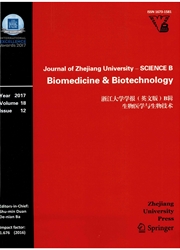

 中文摘要:
中文摘要:
为了推进,开发方法遥远地察觉到植物华盖的生物化学的内容,我们报导一个实验的结果估计玉米的三个生物化学的变量的集中,即,氮(N) ,粗略的脂肪(EE ) ;粗略的纤维(CF ) 集中,旁边分光反射率;在新鲜的叶规模的第一衍生物反射。在分光反射率之间的关联;第一衍生物转变;三个生物化学的变量被分析,;一套评价模型用曲线试穿分析被建立。决心的系数(R [2 ]) ,根均方差(RMSE ) ;评价模型的预言(议员) 的相对错误为模型质量评估被计算,;三个生物化学的变量的可能的最佳评价模型被建议,与 R [2 ] 是 0.891, 0.698;0.480 N 为评价当模特儿, EE;CF 集中分别地。结果也比为所有三个生物化学的变量评价使用未加工的分光反射率显示用第一衍生物,反射好,;在 759 nm 的第一衍生物反射, 1954 nm;2370 nm 是很合适的开发 N 的评价模型, EE;CF 集中分别地。另外,高关联系数理论;测量生物化学的参数被获得,特别为氮(r=0.948 ) 。
 英文摘要:
英文摘要:
To further develop the methods to remotely sense the biochemical content of plant canopies, we report the results of an experiment to estimate the concentrations of three biochemical variables of corn, i.e., nitrogen (N), crude fat (EE) and crude fiber (CF) concentrations, by spectral reflectance and the first derivative reflectance at fresh leaf scale. The correlations between spectral reflectance and the first derivative transformation and three biochemical variables were analyzed, and a set of estimation models were established using curve-fitting analyses. Coefficient of determination (R2), root mean square error (RMSE) and relative error of prediction (REP) of estimation models were calculated for the model quality evaluations, and the possible opti- mum estimation models of three biochemical variables were proposed, with R2 being 0.891, 0.698 and 0.480 for the estimation models of N, EE and CF concentrations, respectively. The results also indicate that using the first derivative reflectance was better than using raw spectral reflectance for all three biochemical variables estimation, and that the first derivative reflectances at 759 nm, 1954 nm and 2370 nm were most suitable to develop the estimation models of N, EE and CF concentrations, respectively. In addition, the high correlation coefficients of the theoretical and the measured biochemical parameters were obtained, especially for nitrogen (r=0.948).
 同期刊论文项目
同期刊论文项目
 同项目期刊论文
同项目期刊论文
 期刊信息
期刊信息
